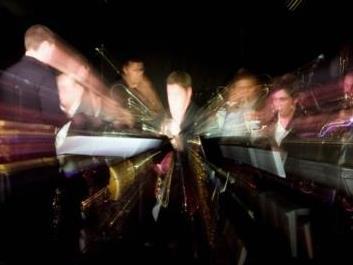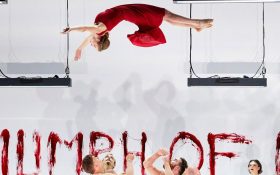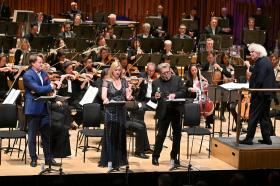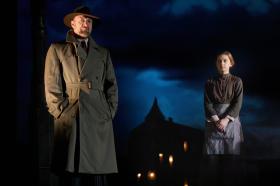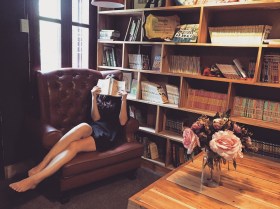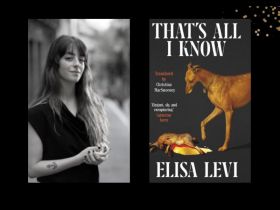The Jazz Standard of Living Image via Fringeworld
Perth’s Fringe World 2015 is currently sauntering through the Western Australian capital. Featuring more than 2,000 performers, the annual festival has perfected a blend of cabaret, circus, theatre, film and comedy with glamour and quirky grunge.
It was launched last month in the magnificent Palais des Glaces Spiegeltent in Northbridge. WA Premier Colin Barnett lauded the rise of the festival which has grown from 150 events in 2012 to more than 500 for this year.
The Fringe World Impact Report 2014 states that the festival’s financial benefits include more than A$27 million in visitor expenditure, and more than A$45 million in total gross value-added economic impact.
The contribution the festival makes to the cultural and artistic life of WA is recognised. But the nearly 1,788 participants honing their shows ready for opening night often make a significant financial contribution to the festival themselves.
Local director and producer Suzanne Ingelbrecht highlighted the financial risks and unpaid hours that create fringe productions in the program for a show she directed called The List.
She argues that what drives artists is their “artistic passion and integrity” – and that this, not sponsors, is the real powerhouse driving the success of fringe festivals everywhere. She asks that this reality “be more acutely acknowledged by taxpayer-funded performing arts organisations in Perth and beyond”.
The nuts and bolts of fringe festivals
As with many fringe festivals around the world, Fringe World is an open-access event. Anyone with the A$300 registration fee can take part. Once registered, Fringe World either matches artists with a venue – or you find or run your own space.

The Pleasure Garden. Jarrad Seng/Buzzmedia
Each venue charges a hire fee, or offers a split of the box office receipts, or a combination of both. Fringe World generates income from various fees, grants and sponsorship to cover the day-to-day running, marketing and branding of the festival, and to cover the running costs of the magnificent centrepieces – the Pleasure Garden, and the Urban Orchard. These hubs house the glamorous Spiegeltents – the structures that give this festival its unique flavour and appeal.
But the venue facilities offered to artists vary greatly.
They range from the high-tech Studio Underground at the State Theatre Centre with comfortable seating and quiet air conditioning to marquees with wooden bleachers and the constant background hum of the A/C and passing traffic.
Nonetheless, open access has worked its magic on the West Australian arts community and audiences. Fringe World events now pop up further afield in regional Western Australia.

Dan Willis in Control Alt Delete. Buzzmedia
Melbourne-based comedian Dan Willis has followed the rise of Perth’s Fringe World. A veteran of comedy festivals around the world, including Melbourne and Edinburgh, Willis told me that he feels fortunate to have a spot in the Casa Mondo tent in the Pleasure Gardens. His box office split deal gives him the majority of the ticket sales, minus a small service fee.
With cheap accommodation and airfares, he expects to make more than the A$1,800 it cost him to get and stay here. This would not have been possible if he had presented at venues where producers are charging artists A$150 to A$300 for a one-hour slot.
Fringe festivals are often testing grounds for up-and-coming artists, and audiences may not take a chance on someone unknown. So a performer has to choose between lowering ticket prices and wearing the costs or passing these on and risking low attendance.
Another essential expense is publicising a show. Some media outlets offer advertorial packages; the Fringe itself offers an exclusive poster distribution deal in the main hub areas; and then there are artists wandering around handing out flyers. These and other costs are all important contributions to the local economy.
This economic impact is a common narrative in all the publicly available annual reports from Fringe Festivals around the world. But average returns for artists after they have paid fees, upfront expenses and production costs are rarely reported.
The artistic reward and fulfilment from creating and presenting work is a key driver for artists. But this comes at a cost. Tiffany Barton’s company Creative Collaborations is producing two shows this year at Fringe World.
Even though previous fringe shows have made around A$4,000 from ticket sales, she and her fellow artists often walk away with about A$400 each. There are, of course, benefits to being part of Fringe World. Barton tells me Fringe World gives them Artist Passes so they can see other shows for free, subject to availability.
Another bonus is the Budgie Smuggler, the artists-only bar, providing cheap drinks and free entertainment. Having presented at fringe festivals overseas, Barton sees WA’s Fringe World as a good deal.
Even though the politicians and businesses may love the economic impact Fringe World brings to Western Australia, and the City of Perth enjoys the revitalisation of Northbridge, making this area safer and more friendly for families, it is important to remember that its success is underpinned by the passion, hard work and creativity of the artists – and their dollars.
Fringe World is running in Perth until February 22. Details here.
This article was first published in The Conversation.